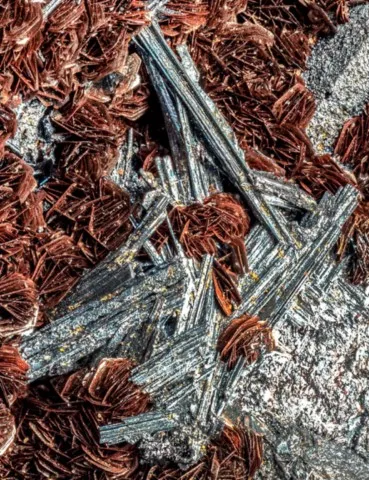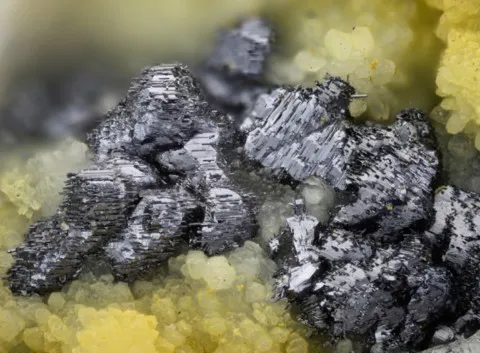STROMEYERITE
Class : Sulfides and sulfosalts
Subclass : Sulfides
Crystal system : Orthorhombic
Chemistry : AgCuS
Rarity : Uncommon
Stromeyerite is a relatively rare silver sulfide that forms in silver-copper hydrothermal deposits. It is consistently associated with copper and silver sulfides (chalcopyrite, tetrahedrite, acanthite) as well as lead and zinc sulfides (sphalerite, galena). It was named in honor of Friedrich Stromeyer, Professor of Chemistry at the University of Göttingen who first studied the mineral. Stromeyerite is a usually massive mineral, steel-gray to bluish-blue in air, with a strong metallic luster. Pseudohexagonal prismatic crystals are very rare. It is a difficult mineral to identify with advanced analytical means. It is an accessory ore of copper and silver.
Main photo : Stromeyerite & hematite from Alexander Mine, Pribram, Czech Republic © Gianfranco Ciccolini
Stromeyerite in the World
Twinning
Twinning is common on {101}.
Fakes and treatments
No fakes listed for this mineral species.
Hardness : 2.5 to 3
Density : 6.2 to 6.3
Fracture : Sub-conchoidal
Streak : Gray
TP : Opaque
RI : -
Birefringence : -
Optical character : -
Pleochroism : None
Fluorescence : None
Solubility : Hydrochloric acid
Magnetism : NoneRadioactivity : None


